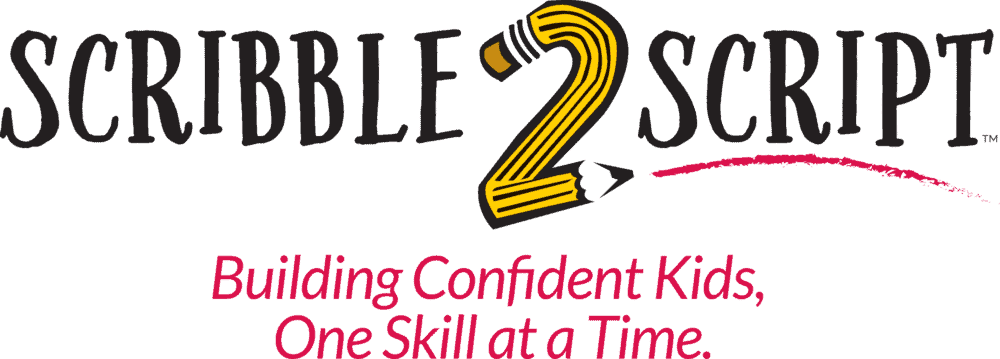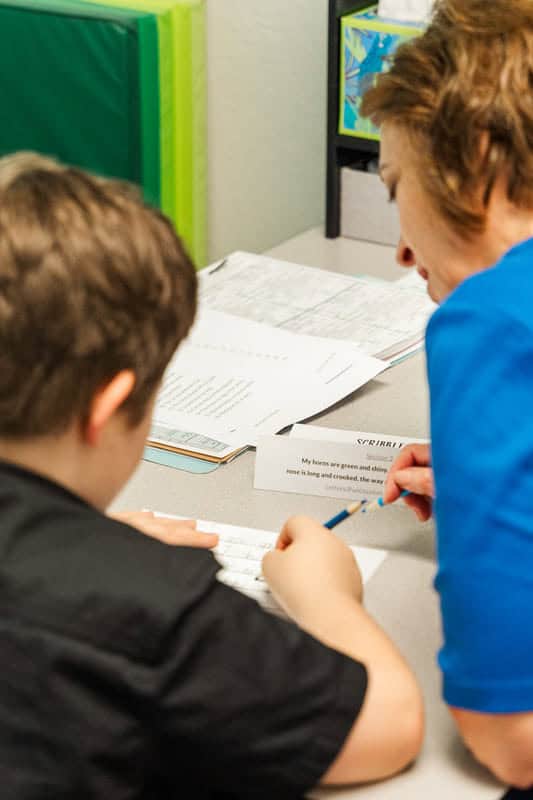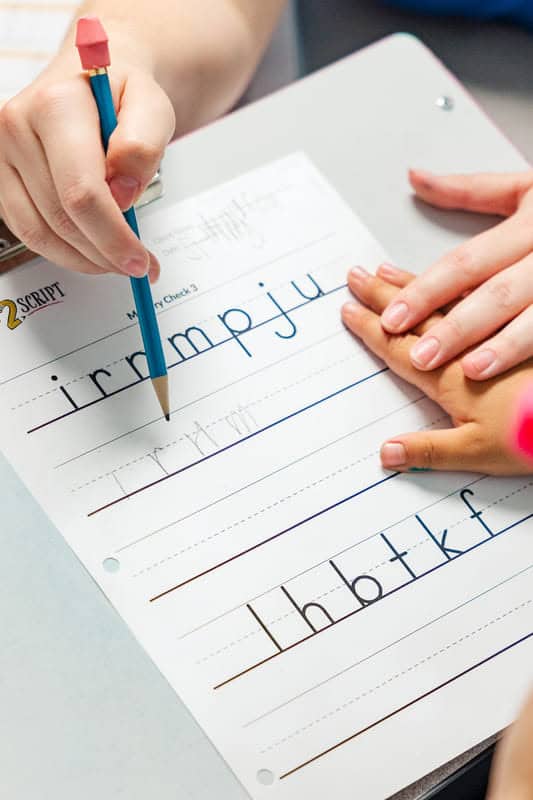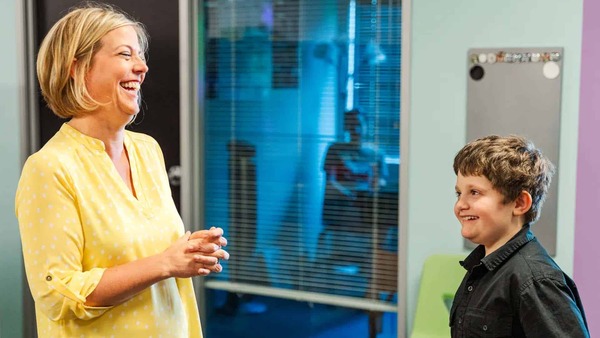In a world increasingly shaped by touchscreens and keyboards, handwriting can feel like a relic of the past. But a growing body of neuroscience tells us otherwise. Handwriting isn’t just relevant, it’s essential.
In this fascinating study published in Frontiers in Psychology, they used high-density EEG to observe brain activity in young adults during handwriting versus typewriting. The results were striking: cursive handwriting activated more widespread and coordinated neural networks than typing.
At Scribble 2 Script, this doesn’t surprise us. We’ve long believed that handwriting, especially when integrated with movement, posture, rhythm, and coordination, is one of the most powerful brain-building tools available to children. And this study provides fresh evidence to back up what we see in practice every day.
Handwriting Is Cognitive Calisthenics
Let’s dig deeper: Why is handwriting so powerful?
When a child forms letters by hand, they’re engaging multiple brain regions at once:
-
The motor cortex controls the hand and finger movements.
-
The visual system tracks spatial positioning and letter formation.
-
The sensory cortex receives feedback from the pencil and paper.
-
The prefrontal cortex helps plan, recall, and attend to the task at hand.
Typing, on the other hand, tends to be more uniform and automatic. Tapping keys in a repetitive motion doesn’t require the same level of neural choreography. Handwriting demands far more precision, timing, and integration and the brain responds by strengthening the very pathways children rely on for learning (James & Engelhardt, 2012; Longcamp et al., 2005).
In fact, research shows that children who write by hand:
-
Retain information longer (Mueller & Oppenheimer, 2014)
-
Show stronger reading and spelling skills (Berninger & Richards, 2011)
-
Demonstrate better working memory and impulse control
-
Are more likely to stay engaged in learning tasks (Dinehart, 2015)
This is why handwriting belongs in the same conversation as executive function, emotional regulation, and academic success. It’s not just a fine motor skill, it’s a full-brain workout.
The Risk of Skipping the Script
Many schools are reducing handwriting instruction in favor of keyboarding. While tech literacy is important, we have to be careful. If we shortcut handwriting too soon, or skip it altogether, we miss a critical window of brain development.
In our work, we’re already seeing the downstream effects:
-
Children with weak handwriting often struggle with reading and writing fluency.
-
Kids who haven’t mastered pencil grip fatigue quickly and disengage.
-
Poor fine motor skills lead to frustration, low confidence, and avoidant behaviors.
Most concerning? These challenges often go unrecognized because they’re viewed as “normal” in the digital age. But normal doesn’t mean optimal.
What This Means for Parents and Educators
Whether you’re raising or teaching young learners, you play a vital role in protecting this essential skill. Here’s how:
1. Prioritize Handwriting Early and Often
Start before school does. Encourage your child to draw, scribble, paint, trace, and write on paper, in sand, with chalk, on windows, you name it. These are not just pre-writing skills; they are pre-learning skills.
2. Don’t Skip Cursive
Cursive gets dismissed as outdated, but it builds a different kind of motor memory and visual-motor fluency. The connected nature of cursive writing actually supports reading, rhythm, and recall (Berninger & Richards, 2011).
3. Make It Meaningful
Have your child write notes to relatives, label their drawings, or create “menus” for pretend play. Handwriting should feel purposeful and personal, not just a worksheet chore.
4. Ask Your School the Hard Questions
-
How often do students practice handwriting?
-
Is it taught explicitly?
-
Are fine motor needs identified and supported?
If the answers are vague or minimal, advocate. Show them the research. Share the vision.
What the Research Really Says About Handwriting and the Brain
If you’re curious to explore the science behind handwriting, here are a few key studies that have shaped our approach at Scribble 2 Script:
-
James & Engelhardt (2012)
The Effects of Handwriting Experience on Functional Brain Development in Pre-Literate Children
→ Handwriting (vs. typing or tracing) activates reading-related areas in the brain in pre-literate children. -
Longcamp et al. (2005)
Premotor Activations in Response to Visually Presented Single Letters Depend on the Hand Used to Write
→ Writing by hand results in stronger sensorimotor engagement than typing. -
Mueller & Oppenheimer (2014)
The Pen Is Mightier Than the Keyboard
→ Students who handwrite notes retain more and understand material better than those who type. -
Dinehart (2015)
Handwriting in Early Childhood Education
→ Preschool handwriting ability is predictive of later academic achievement. -
Berninger & Richards (2011)
Brain Literacy for Educators and Psychologists
→ A foundational text showing how handwriting supports executive function, literacy, and cognitive development. -
Mangen et al. (2015)
Handwriting Versus Keyboard Writing: Effect on Word Recall
→ Found that handwriting leads to better memory and recall than typing.
At Scribble 2 Script, We Take This Seriously
Every one of our programs is designed to build whole-child readiness through movement, motor coordination, and handwriting mastery. We don’t teach handwriting in isolation, we teach it as a gateway to cognitive development, emotional regulation, and academic success.
We blend therapeutic techniques with engaging, research-based activities that help kids form letters and form lasting brain connections.
Final Thoughts: Let’s Rethink What “Writing Skills” Really Are
Handwriting is more than a skill. It’s a stimulus for growth, connection, and confidence. When children develop the ability to write fluidly, they unlock access to higher-level thinking, communication, and independence.
In a culture obsessed with digital efficiency, let’s not lose sight of what really supports our children’s development. Let’s put the pencil back in their hands and watch their brains light up.
Want to learn how Scribble 2 Script can support your child’s handwriting journey? We’d love to connect. Reach out today to schedule an evaluation or schedule a discovery call to learn more.






